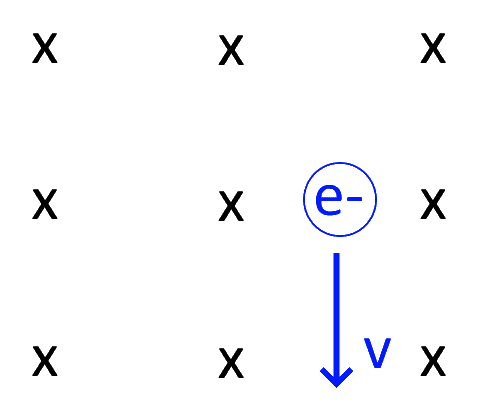Looking for some more revision material for the VCE Physics Exam?
You’ve come to the right place. Whether you’re just beginning to study or looking to complete some last minute revision, these questions will help refresh and lock in the knowledge you’ve already built, as well as offering some helpful tips on how to answer the questions.
So, let’s dive in!
Physics EA Multiple Choice Practice Questions
When completing these questions, use the following values
| Constant | Value |
|---|---|
| g | 9.81 m/s2 |
| h | 6.63 |
| c | 3.00 x 108 m/s |
| Unit Conversions |
|---|
| 1 eV = 1.6 x 10-19 J |
| 1 e = 1.6 x 10-19 C (Charge of an electron) |
Give all answers to three significant figures.
Question 1
The following information applies to questions 1-4.
A 1,000,000 kg exoplanet is on a collision course with Earth, which has a radius of 6371 km and a mass of 5.97 x 1024 kg. Assume that the exoplanet is just colliding with the Earth.
Calculate the magnitude of the gravitational force that Earth exerts on the Exoplanet. (2 marks)
Hint: Make sure to show the formula you are applying before inserting values, and give the answer in SI (N).
Question 2
Calculate the magnitude of the gravitational force that the Expolanet exerts on Earth. (1 mark)
Hint: The answer should be identical to the one above.
Question 3
Calculate the acceleration of the exoplanet towards Earth. (2 marks)
Hint: Newton’s laws can be used here. You should get a familiar value!
Question 4
Calculate the acceleration of the Earth towards the Exoplanet. (2 marks)
Hint: This should be much smaller than the answer above. Use scientific notation.
The following information applies to questions 5 and 6.
A satellite initially orbits Jupiter at an altitude of 100,00 km above Jupiter’s surface. The satellite then descends until its velocity reaches 45.8 km/s. Assume that Jupiter has a mass of 1.91 x 1027 kg and a planetary radius of 7.17 x 107 m
Question 5
Calculate the velocity of the satellite before it begins its descent. (3 marks)
Hint: Try and use either Kepler’s laws or circular motion.
Question 6
Calculate the altitude of the satellite after its descent. (2 marks)
Hint: Use a similar approach to question 5. Make sure to calculate altitude, and not orbital radius.
Question 7
Two protons repel from each other at a distance of 3.3 x 10-7 m. Each proton has a mass of 1.67 x 10-27 kg. What is the magnitude of the electric force between the two protons? (2 marks)
Question 8
Suppose that a 5m wire is placed in a uniform magnetic field of 0.15 T, and the maximum force on this wire is 2 N. What must the current in this wire be? (2 marks)
Hint: Rearrange the equation first, then substitute values.
Question 9
Is the Earth’s magnetic field stronger at the poles or the equator? Justify your answer. (2 marks)
Hint: Use two to three lines. The first should state the answer, and the rest should explain that answer based on what you have learnt. Try drawing Earth’s magnetic fields.
Question 10
An electron (charge -e) and a positron (charge +e) approach each other. They are currently at a distance of r. If this distance halves, by what factor does the electric force between them change. (2 marks)
Hint: Try to use a proportional symbol in the electric force equation. What is constant and what changes?
Question 11
Briefly explain the purpose of a commutator in an electric motor. (2 marks)
Hint: What would happen if the commutator was not there? Think about the forces on the loop.
Question 12
The following information relates to questions 12 & 13.
An electron is accelerated from rest through a field of 5.0 kV. Assume that the electron has a mass of 9.11 x 10-31 kg.
What is the speed of the electron after acceleration (ignoring relativistic effects)? Give your answer in m/s2. (2 marks)
Hint: How much energy does the electron have after acceleration? Can you convert this into SI?
Question 13
When it exits the gun, the electron passes into a magnetic field of strength 10.0 mT, perpendicular to the electron’s motion. What is the radius of the electron beam? Give your answer in mm. (3 marks)
Hint: If you don’t have the equation in your notes, try deriving it from circular motion and the magnetic force on the electron.
Question 14
An electron beam is generated using a similar method to the one above. If the radius of the electron’s orbit is 32.1 mm, the magnetic field strength is 13 mT, and the velocity of the electron is 7.33 x 107 m/s. Show that the mass of the electron is 9.11 x 10-31 kg. (2 marks)
Hint: Rearrange the equations you used above for mass, and then make sure to finish the question by stating what you have shown.
Question 15
The image above shows an electron in a constant magnetic field, and its initial velocity. Draw the path of the electron as it moves through this field. (1 mark)
Hint: Make sure to consider the direction of positive charge. The drawing should clearly show both the path and the direction of the electron around this path.
Question 16
A rectangular coil with an area of 20 cm2 and a resistance of 4.0 Ω is placed in a uniform magnetic field with strength 6.0 mT. What is the magnitude of the EMF generated when the magnetic field is doubled in 50 ms? (2 marks)
Hint: Make sure to convert the units into SI.
The following information relates to questions 17-20.
Suppose that a 10 km power line (resistance 3 Ω/km) is used to transfer power from a wind turbine to a city. At the generator, 240 V is stepped up using a coil ratio of N2/N1 = 50. Assume that the turbine outputs 2.75 MW.
Question 17
What is the current in the power line? (3 marks)
Hint: Make sure to correctly apply the transformer equations.
Question 18
How much power is lost in the power line? (1 mark)
Question 19
The transformer at the city steps down the voltage back to 240V. What current is delivered to the city? (2 marks)
Hint: The percentage of current lost is equal to the percentage of power lost. Why?
Question 20
How can the power lost realistically and efficiently be reduced? (1 mark)
Hint: Think about the cost/ ease of your solution.
Question 21
A Golfer hits a ball from a tee 4cm above the ground, with an initial velocity of 24 m/s at an angle of 52°. If the ball hits the green, which is 1.2 m above the ground, how far has it travelled? (3 marks)
Hint: Make sure to draw the trajectory of the ball. What do you know about the vertical and horizontal motion of the ball?
Question 22
A shuttle travels between two systems at a constant velocity of 3.2 x 108 m/s. A stopwatch on the satellite measures the length of this journey as 4 Years. What time would an observer floating at rest in space measure? (2 marks)
Hint: Will the answer be shorter or longer than 45s?
Question 23
Briefly explain how Hyugen’s principle implies that light waves curve towards the normal as they enter water from air. (2 marks)
Hint: Consider the speed of light in these two substances.
Question 24
How does the wave model of light fail to explain the result of Einstein’s photoelectric experiment? (2 marks)
Hint: Your answer should reference the different results for varying frequency and amplitude in this experiment.
Question 25
Assume that a volleyball (mass 270g) is travelling at a speed of 2.1 m/s. What is the de Broglie wavelength of this volleyball? (2 marks)
Hint: Make sure to convert the units first.
Answers for VCE Physics Short Answer Questions
Click here to download the solutions to the 25 practice questions above!
And, you’ve finished all the questions!
Check out some extra resources for VCE Physics here:
- The Ultimate 7 Day Study Plan for Your VCE Physics Exam
- The Ultimate Guide to Creating a Scientific Poster for VCE Physics
- VCE Physics Past Exams Master List
- What to Do the Night Before Your VCE Physics Exam
- The Ultimate Guide to Units 1 and 2 VCE Physics
- The Ultimate Guide to Units 3 and 4 VCE Physics
Are you looking for some extra help with preparing for your VCE Physics External Short Answer questions?
We have an incredible team of VCE tutors and mentors!
We can help you master the VCE Physics study design and ace your upcoming VCE assessments with personalised lessons conducted one-on-one in your home or online!
We offer local tutoring right to your door step! Get booked in with one of our expert VCE tutors in Glen Waverley today!
We’ve supported over 8,000 students over the last 11 years, and on average our students score mark improvements of over 20%!
To find out more and get started with an inspirational VCE tutor and mentor, get in touch today or give us a ring on 1300 267 888!
Scott McColl is a content writer with Art of Smart and a Civil Engineering student at Monash University. In between working and studying, Scott enjoys playing music and working on programming projects.




